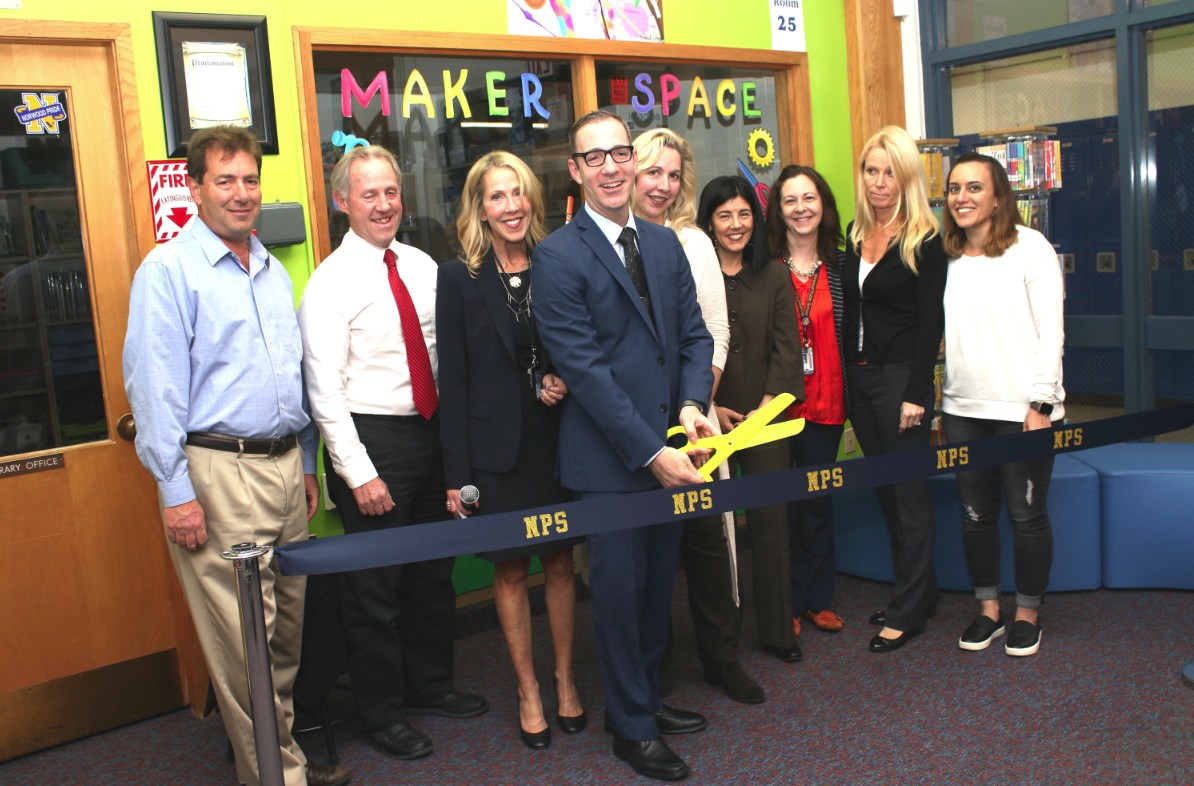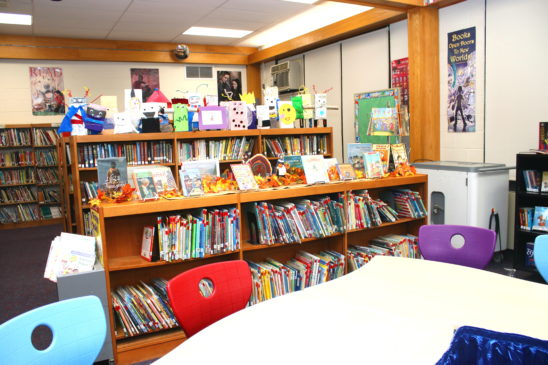
BY SHANNON MCLAUGHLIN
OF NORTHERN VALLEY PRESS
NORWOOD, N.J. –– From building structures to support autumn pumpkins, to creating robotic projects to mimic the movements of bats, the sky is now the limit for creators at Norwood Public School.
[slideshow_deploy id=’899′]
Located in the school library, a newly-dedicated Makerspace has become available to students. A Makerspace, tied to the STEAM (science, technology, engineering, arts and mathematics) movement, is an initiative where students are free to engage in activities through hands-on, natural learning.
STEAM has become increasingly popular in recent years, as educators and policymakers work to bring science, technology, engineering, arts and mathematics to the forefront of U.S. education.
In Northern Valley, the Makerspace will further add the STEAM framework to student learning, and it’s already seeing success.
“The kids are having a great time learning how to work together, how to think outside the box and how to imagine,” said Michelle Rienas, the school’s library media specialist, who directs students in the Makerspace. “You have that element of teamwork and trying different materials.”
The Makerspace provides students with a hands-on, exploratory form of learning. It’s a space where students are free to invent, imagine, create and design. When something doesn’t go as planned, students are pushed to redesign their projects by means of collaboration.
The ability to troubleshoot and tinker projects is a notable part of the Makerspace, according to Rienas, since it organically pushes student creativity even further.
In the Makerspace, she said, “there is no right way to do things.”

Norwood’s Makerspace is currently open to K-4 students. Rienas explained that students come in once per week during their homeroom, and work with her on different challenges. Rienas works with teachers, studies the curriculum and looks at the Makerspace’s resources to come up with the challenges.
And the resources available to students are another story.
Students work on the challenges with blocks, Legos, bottle caps, fabrics, paint, toothpicks, straws, aluminum foil, wires, ribbon, tools, recyclables, old electronics and many, many more materials.
“You name it, we have it,” Rienas said, since the more resources available to students, the more creative they can get in their exploration.
The Makerspace already has a bounty of materials, but Rienas said more materials are always welcome to further students’ creativity.
[slideshow_deploy id=’899′]
Although everyday items like toothpicks and ribbon may not seem like much, the Makerspace movement has proven to have a strong pedagogical impact on contextual learning and interest in STEAM careers.
Photo by Murray Bass
